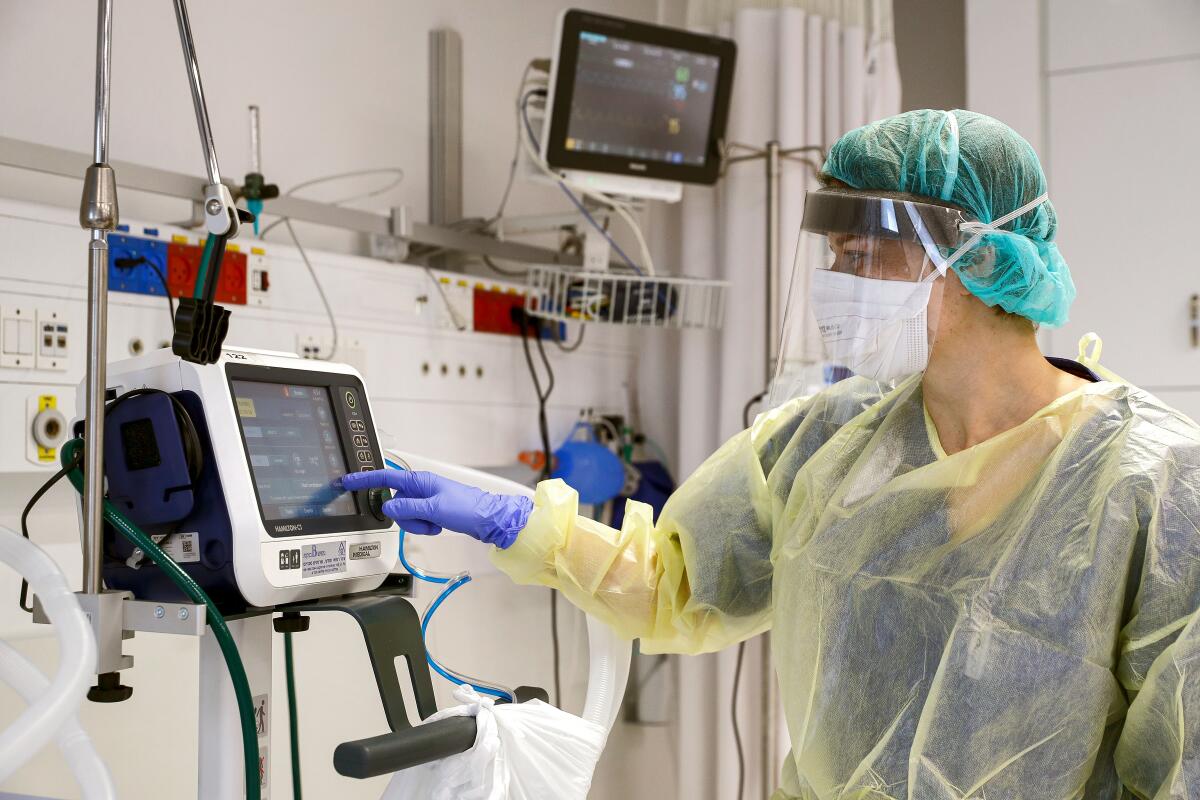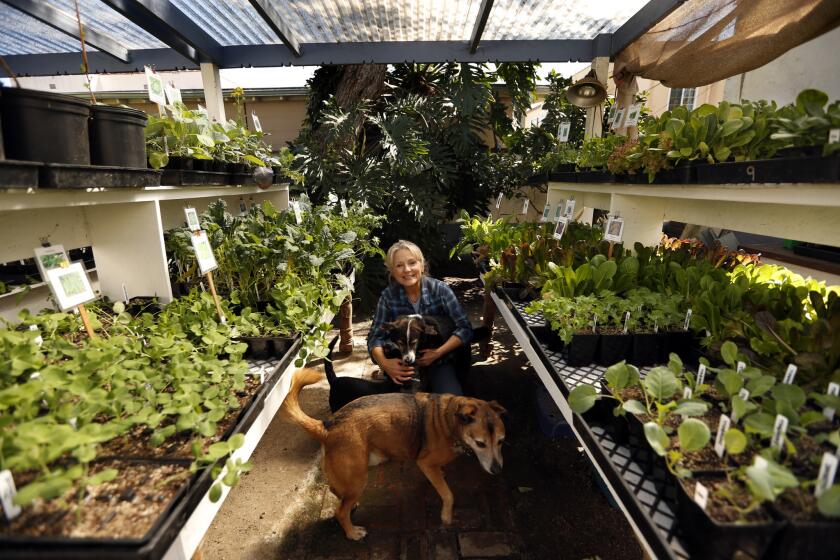California companies jump in to supply ventilators needed in coronavirus fight

- Share via
Last week, Bloom Energy Chief Executive KR Sridhar realized his fuel-cell business could help alleviate the state’s critical shortage of ventilators.
The San Jose company repairs and refurbishes the fuel-cell power generators it sells to large companies and nonprofits, and Sridhar saw similarities with ventilators, which help patients breathe. After speaking with Gov. Gavin Newsom’s office, Bloom Energy would embark on refurbishing the state’s supply of 200 older ventilators.
For the record:
11:41 a.m. March 23, 2020A previous version of this story said Bloom Energy assessed the first batch of ventilators from the state of California within 24 hours. Bloom Energy refurbished the ventilators within 24 hours.
The ventilators are especially crucial now in treating cases of COVID-19, the disease caused by the novel coronavirus, because critically ill patients often suffer severe respiratory symptoms.
And it’s not easy to ramp up production. It could take about three months for manufacturers to increase their capacity, and even longer for companies without prior experience making ventilators.
Many California businesses have shuttered to limit the spread of the coronavirus, but construction continues after being deemed essential.
Bloom Energy is just one of several California-based companies pitching in to increase the share of medical supplies to fight the coronavirus.
Tech giant Apple Inc. has been “working to source supplies” for healthcare workers and is donating “millions” of masks to healthcare workers in the U.S. and Europe, company CEO Tim Cook tweeted Saturday afternoon. Cook did not elaborate in the tweet on what supplies Apple would source, and a company spokesperson declined to comment further.
Newsom said Saturday that Elon Musk promised to use the supply chains that support Tesla Inc. and SpaceX for help in assembling ventilators. Over the last few days, Musk has tweeted that SpaceX would be producing ventilators and that he had a “long engineering discussion” with ventilator manufacturer Medtronic, which has operational headquarters in Fridley, Minn.
Musk has been skeptical, though, tweeting Thursday that “we’re working on ventilators, even though I think there will not be a shortage by the time we can make enough to matter.”
Medtronic said in a statement that the company had a “great discussion” with the Tesla team and was willing to work with Tesla and other companies to “try and solve this global ventilator supply challenge.”
“We believe the fastest way to get additional ventilators into hospitals is for us to leverage and grow our existing infrastructure,” Medtronic said.
On Monday night, California Gov. Gavin Newsom said ventilators provided by Musk had arrived in Los Angeles. But it was unclear whether Musk had purchased or built the machines. Officials for Tesla and SpaceX did not return calls for comment, and the governor’s office of business and economic development did not have an immediate response.
Producing ventilators is no easy task. For one, there’s a difference between the ventilators used in ICUs and the ones used at home for patients with severe chronic respiratory failure, or in ambulances, said Julie Letwat, counsel at McGuireWoods, who has worked for pharmaceutical companies and professional medical associations.
“These are complex machines,” she said. “This isn’t ordering gloves and masks.”
Plant nurseries are now offering curbside service: ‘A resurgence of victory gardens’
Medtronic, for instance, uses more than 1,500 parts to make high-performance ventilators and currently partners with more than 100 suppliers from around the globe. The company manufactures high-performance ventilators in Galway, Ireland.
Ramping up production will take time, even for companies that are accustomed to making the machines. Those manufacturers have said it will take 90 to 100 days to increase their production capacity, Letwat said. That means companies that have offered to build ventilators could expect even longer lead times.
Bloom Energy picked up its first batch of 24 old ventilators from Sacramento on Friday and an engineer quickly downloaded the service manual and learned how to construct and deconstruct the machines. Within 24 hours, a small “tiger team” of employees had refurbished the ventilators and the machines are just waiting on certification. The ventilators, which were from the state’s prepared stockpile of supplies from the H5N1 outbreak in the mid-2000s, were past their warranty date. Some needed calibration, while others had brittle parts that must be replaced.
The company’s work involves getting new parts, changing out old ones, getting the machines certified and back to the state, said Susan Brennan, chief operations officer. Work is being done with a small team of fewer than 10 people at a Bloom Energy facility in Sunnyvale that’s also still building the company’s power generators.
Delaware is also in the process of shipping older ventilators to Bloom Energy.
“We’re looking forward to understanding how do we get the supply, and then we can start to continue to refine our process to allow turnaround of these seriously needed medical apparatuses to the people that need them,” Brennan said.
More to Read
Inside the business of entertainment
The Wide Shot brings you news, analysis and insights on everything from streaming wars to production — and what it all means for the future.
You may occasionally receive promotional content from the Los Angeles Times.













